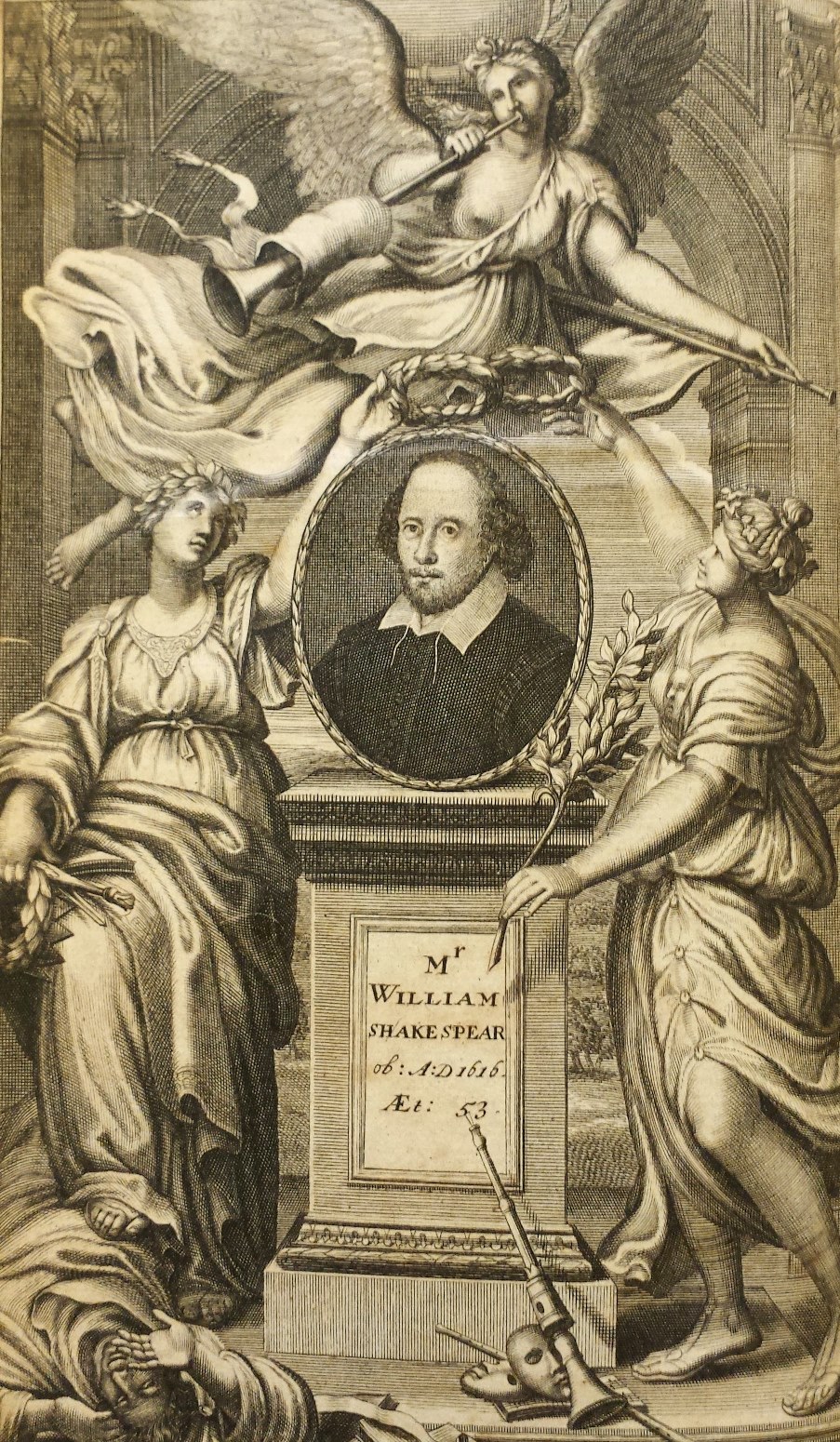
April 22, 2016, by Kathryn Steenson
Picturing Shakespeare
Tomorrow, the 23rd April, is the quartercentenary of the death of William Shakespeare (1564-1616). We, and the Library more generally, have been celebrating Shakespeare throughout April. If you visited the Reading Room this month, you will have seen some of the wonderful books in our Cambridge Shakespeare Collection on display.
It owes its existence to Henry Thomas Hall (1823-1894), a resident of Cambridge and an active member of the Cambridge Garrick Club. Hall amassed a huge collection of editions of Shakespeare’s works and related historical and critical works about the dramatist. It has been at the University of Nottingham since 1960 and numbers over 1700 volumes, and this blog post looks at three that caught the eye of rare books librarian Ursula.
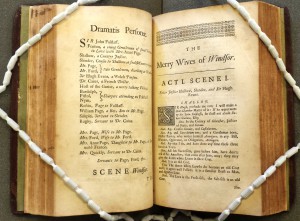
Nicholas Rowe’s edition of The works of Mr. William Shakespear: London 1709. Volume 1 (Ref: CSC PR2752.D09: 6001786467)
Nearly a hundred years after Shakespeare’s death, the dramatist and poet Nicholas Rowe (1674-1718), who was appointed Poet Laureate of the United Kingdom in 1715, published a groundbreaking edition of Shakespeare’s works. For the first time the available sources were used to derive an authoritative version of Shakespeare’s creations. Rowe drew on his experience of writing for stage performances to make editorial changes, such as dividing the plays into scenes, noting the characters’ entrances and exits, and prefixing each play with a list of the dramatis personae.
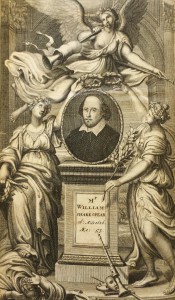
Nicholas Rowe’s edition of The works of Mr. William Shakespear: in six volumes; London 1709. Volume 1 (Ref: CSC PR2752.D09: 6001786467)
The works of Mr. William Shakespear is the earliest book in the collection and was destined for private reading as much as for stage performances. The edition was the first to be illustrated, and the frontispiece engravings for each play are by Michael van der Gucht (1660-1725).
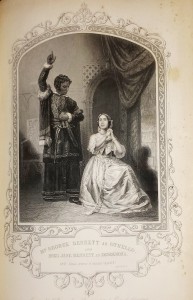
Othello, from ‘The complete works of Shakspere: revised from the original editions with historical and analytical introductions to each play, also notes explanatory and critical, and a life of the poet by J.O. Halliwell’ ; London 1850s. (Ref: CSC Oversize PR2753.E50)
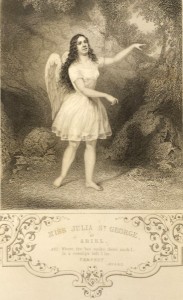
Ariel, from ‘The complete works of Shakspere: revised from the original editions with historical and analytical introductions to each play, also notes explanatory and critical, and a life of the poet by J.O. Halliwell’; London 1850s. (Ref: CSC Oversize PR2753.E50)
This edition of The Complete Works of Shakespeare in three volumes (one each for Tragedies, Comedies and Histories) published by Henry Tyrrell in the 1850s is remarkable for using portraits engraved on steel “from daguerreotypes of the greatest and most intellectual actors of the age”. This use of daguerreotypes explains why the images are so expressionless. For instance, the illustration above depicts Othello angrily interrogating his wife Desdemona about her alleged unfaithfulness, and she is protesting her innocence, although nothing in their faces captures the emotion of the scene or the dreadful events that will follow.
Tyrrell’s use of Shakespearean scholar J.O. Halliwell’s name and material was unauthorized, he presumably pirated it to add intellectual cachet to his edition. Ariel wears angel wings on the Victorian stage. In the fashion of her time the actress Julia St George interprets a spirit to be high-minded and demure. Her obituary claimed that her performance of Ariel was the finest ever seen, but sadly her fame declined and she died alone and poverty-stricken in the Workhouse in 1904.
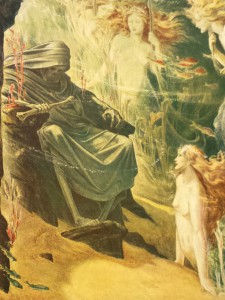
The Tempest by William Shakespeare; with illustrations in colour by Paul Woodroffe and songs by Joseph Moorat; London 1908 (Ref: CSC 6002555028)
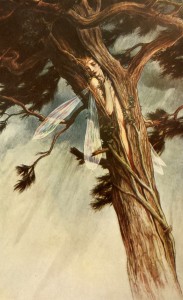
Ariel, The Tempest by William Shakespeare; with illustrations in colour by Paul Woodroffe and songs by Joseph Moorat; London 1908 (Ref: CSC 6002555028)
Lavishly illustrated by Paul Woodroffe (1875-1954), this edition of The Tempest presents Shakespeare’s play in the visual imagery of Art Nouveau. According to the play Ariel was trapped inside a pine by a curse. However, in Woodroffe’s image Ariel is a dragonfly hibernating in complete harmony with the tree, a complete contrast to the depiction in the earlier volumes. The rest of the illustrations are vivid, colourful, and, in the case of the Magical Banquet with the animal-human hybrid spirits, verging on the disturbing.
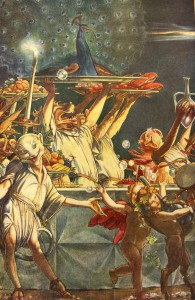
Banquet,
The Tempest by William Shakespeare; with illustrations in colour by Paul Woodroffe and songs by Joseph Moorat; London 1908 (Ref: CSC 6002555028)
The Cambridge Shakespeare Collection is available to search or browse in the University’s library catalogue. You can view these or any of the other volumes in our Reading Room on King’s Meadow Campus. For more information, follow us on Twitter @mssUniNott, visit our website, or read our newsletter, Discover.
More information about national events celebrating Shakespeare is available on Twitter, using #Shakespeare400, or on the Shakespeare400 website.
No comments yet, fill out a comment to be the first

Leave a Reply